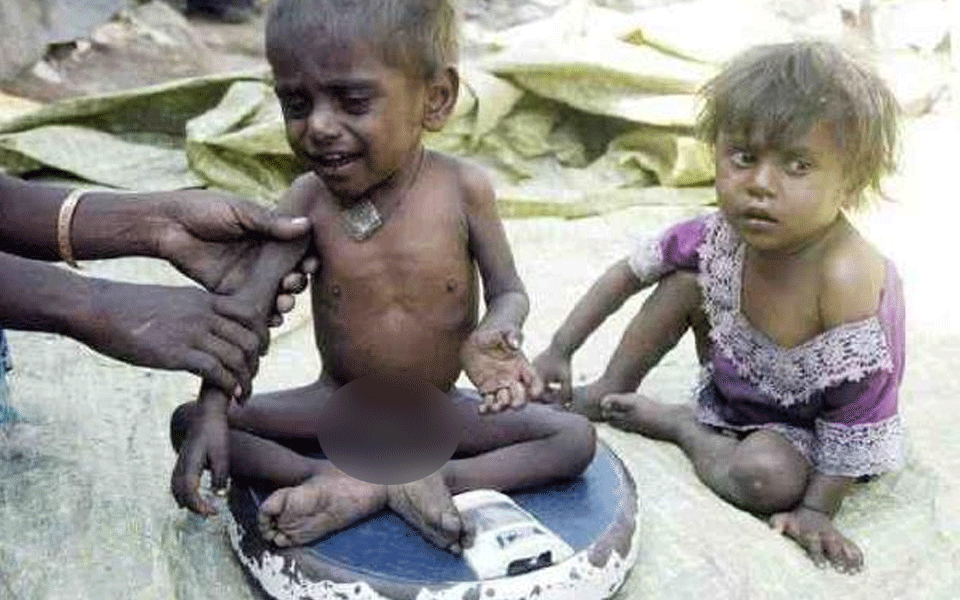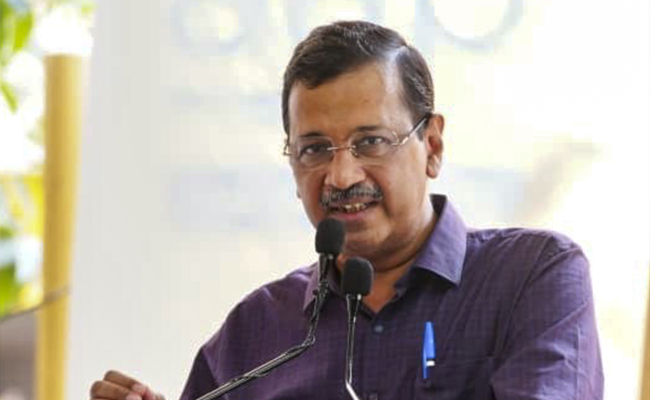They have extremely low weight for their height; the only country with a higher prevalence of child wasting is war-torn South Sudan.
At least one in five Indian children under the age of five are wasted, which means they have extremely low weight for their height, reflecting acute under-nutrition, according to the Global Hunger Index 2018. The only country with a higher prevalence of child wasting is the war-torn nation of South Sudan, says the report, which was released on Thursday.
Overall, India has been ranked at 103 out of 119 countries in the Index, with hunger levels in the country categorised as “serious”. India’s ranking has dropped three places from last year, although the Index says its results are not accurately comparable from year to year and instead provides a few reference years for comparable data. The 2018 scores reflect data from 2013-2017.
Four main indicators are used to calculate hunger levels in the report, which is a peer-reviewed publication released annually by Welthungerhilfe and Concern Worldwide. (The International Food Policy Research Institute was also involved with the publication until this year.)
The first indicator is undernourishment, which is the share of the population which is undernourished and reflects insufficient caloric intake. The next three indicators use data for children under five: child wasting (low weight for height), reflecting acute under-nutrition; child stunting (low height for age), reflecting chronic under-nutrition; and child mortality.
India has shown improvement in three of the indicators over the comparable reference years. The percentage of undernourished people in the population has dropped from 18.2% in 2000 to 14.8% in 2018. The child mortality rate has halved from 9.2% to 4.3%, while child stunting has dropped from 54.2% to 38.4% over the same period.
However, the prevalence of child wasting has actually worsened in comparison to previous reference years. It stood at 17.1% in 2000, and increased to 20% in 2005. In 2018, it stands at 21%. South Sudan’s child wasting prevalence is at 28%.
Child wasting is high across South Asia, constituting a “critical public health emergency”, according to UN organisations. The report notes that wasting rates are highest for infants aged 0 to 5 months, suggesting that attention to birth outcomes and breastfeeding is important.
Also, child wasting in the region is associated with a low maternal body mass index, suggesting the need for a focus on the nutritional status of the mother during pregnancy.
The report notes that in South Asia, “maternal BMI and access to improved water and sanitation are more closely associated with rates of child wasting than household wealth, suggesting that a reduction in poverty alone may not be sufficient to correct the problem…Factors that could reduce child stunting in South Asia include increased consumption of non-staple foods, access to sanitation, women’s education, access to safe water, gender equality, and national food availability.”
Globally, the level of hunger still falls into the “serious” category, despite improvement over the last two decades. The Index projects that at the current rate of progress, 50 countries will fail to reach the “low” hunger category by 2030. This puts the UN’s Sustainable Development Goal 2, which aims to end hunger by 2030, in jeopardy, says the report.
Courtesy: www.thehindu.com
Let the Truth be known. If you read VB and like VB, please be a VB Supporter and Help us deliver the Truth to one and all.
Panaji (PTI): As part of a crackdown against tourist establishments violating laws and safety norms in the aftermath of the Arpora fire tragedy, Goa authorities on Saturday sealed a renowned club at Vagator and revoked the fire department NOC of another club.
Cafe CO2 Goa, located on a cliff overlooking the Arabian Sea at Vagator beach in North Goa, was sealed. The move came two days after Goya Club, also in Vagator, was shut down for alleged violations of rules.
Elsewhere, campaigning for local body polls, AAP leader Arvind Kejriwal said the fire incident at Birch by Romeo Lane nightclub at Arpora, which claimed 25 lives on December 6, happened because the BJP government in the state was corrupt.
An inspection of Cafe CO2 Goa by a state government-appointed team revealed that the establishment, with a seating capacity of 250, did not possess a no-objection certificate (NOC) of the Fire and Emergency Services Department. The club, which sits atop Ozrant Cliff, also did not have structural stability, the team found.
The Fire and Emergency Services on Saturday also revoked the NOC issued to Diaz Pool Club and Bar at Anjuna as the fire extinguishers installed in the establishment were found to be inadequate, said divisional fire officer Shripad Gawas.
A notice was issued to Nitin Wadhwa, the partner of the club, he said in the order.
Campaigning at Chimbel village near Panaji in support of his party's Zilla Panchayat election candidate, Aam Aadmi Party leader Kejriwal said the nightclub fire at Arpora happened because of the "corruption of the Pramod Sawant-led state government."
"Why this fire incident happened? I read in the newspapers that the nightclub had no occupancy certificate, no building licence, no excise licence, no construction licence or trade licence. The entire club was illegal but still it was going on," he said.
"How could it go on? Couldn't Pramod Sawant or anyone else see it? I was told that hafta (bribe) was being paid," the former Delhi chief minister said.
A person can not work without bribing officials in the coastal state, Kejriwal said, alleging that officers, MLAs and even ministers are accepting bribes.





